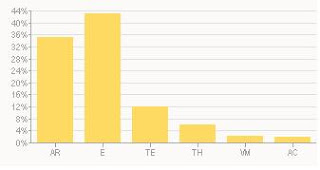Where to start?
First, I’ll say that the stretch of Silver Comet Trail between Rockmart and Cedartown is a rare gift to cyclists that I had not before experienced. A 10’ strip of concrete laid out among some of the most pastoral landscapes in Georgia. I rode it on a 75-degree sunny Thursday afternoon when there was rarely a soul to be seen on that stretch -- just cows, squirrels, and the occasional sluggish snake. I’m going to go back there – it was too good a ride not to repeat. I might also call the Path Foundation to find out who was most responsible for establishing that section of trail. They deserve a thank you letter.

Now for the other part of my afternoon tale:
“blah, b-blah, b-blahblahblah, FAGGOT COMMIE” from the one in the passenger seat. “Go home YANKEE BASTARD” from the one in the truck bed. Wow. Impressive. Perfect images of redneck anti-cyclists were made flesh before mine eyes. They were either more quick-witted than the average fat rubes or had practiced the insults in the mirror of their F-350 for weeks to get it juuuust right. Whatever the case, I was surprised and amused all at once as they hauled ass away, delivering enough black smoke out of the 6” tailpipe of the monster truck to prompt an edit of “An Inconvenient Truth.”

I’d like to investigate the motive, but first allow me to address my accusers.
Homosexual. I readily admit that from time to time I am overcome by the bulging, ripped, muscular gluteus maximii of my Security Bank teammates, covered by only embrocation and a fraction of a millimeter of lycra, ripping up Pate Hill. But I really, really, really like girls. A lot. So I think the gluteus thing must be more power envy than desire to bed a Banker. I’m sure there are homosexuals in the peloton, but as long as they don’t grab my ass or half-wheel me in a group ride, I really don’t care who they snuggle up with afterwards.
 Communist
Communist. The guy must have been over 40, because I perceive “commie” to be a very 1980s flavor of insult – you know: Reagan, “Mr. Gorbachev, tear down this wall” and all that? Well, there was the time that, after a half bottle of Jack Daniels, I thought about giving all my crap to my neighbor, riding my ‘cross bike to Crater Lake, starting a bike taxi service, and living on Gu in an abandoned school bus. But when I sobered up, I realized that I really like all of my stuff and would like very much for it to remain mine. I might even like to have more stuff one day. A die-hard capitalist with moderate tendencies? Yes. A communist? Not so much.
Yankee. Hmmmm. That one’s pretty funny. I do live north of Macon. But I’ve heard tell that my great grandfather went quite a bit out of his way during the (not so) Recent Unpleasantness to kill as many Damn

Yankees as he possibly could before turning 17 and enduring reconstruction eating sweet potatoes three meals a day in a 2-room dirt-floor cabin after Bill Sherman made his brutal march and killed all the family livestock. In 2009 Monticello may be a lot of things, but a Yankee hangout it is not. So I think I’ve established that insult as more than a little hollow.
So why was I the target of the unprompted verbal salvo by the big bubbas? I wasn’t even on THEIR road – I was on a prissy little big-city funded side trail and completely out of their precious way. Funny thing is, I can shift pretty smoothly from cyclist to redneck when I want to. I guess that makes me a double agent? I hunt, drive a truck (sort of), eat cornbread, drink sweet tea, and can talk real rural like. I think Lewis Grizzard was great and that the SEC can kick the PAC 10’s ass. So what’s the root of his hostility?
Maybe they saw my chiseled calves and thought I’d steal their women? I’ve got news for them: I’ve got a woman that is, by observation and by definition, smarter and finer than anything they could ever lure into the black hole of enlightenment they call existence. So there’s no threat to them there.
Maybe they want all the 2010 earmark money for more lanes on Highway 278. Maybe they thought I might use my faggot wiles and communist trickery to successfully lobby for more miles of trail, taking their tax money and limiting them to four lanes, requiring them to slow to 80 mph the next time three people decide to drive from Rockmart to High Point in the same afternoon.
Or maybe they are simple prudes. Maybe the sight of my gleaming bare flesh and the bulges in my bibshorts reminded them of their mothers’ beating the crap out of them for looking at girly magazines before they turned 35 and finally moved away from home.
Hmmm. I seem to have mentioned glutes, calves, and bare flesh a lot – maybe I’m seeing a common thread here?

Whatever the reason, they can both kiss my narrow ass, because although there are many that feel and act exactly as they do, the fact that I can ride from Rockmart to Cedartown and beyond on a path dedicated to cyclists and other non-motorists, built partly with our precious transportation funding proves that they are beginning to lose the battle. There are people in Polk County, even a few heterosexual capitalist southerners, who like the Comet; they
appreciate it and support it. Thanks goes out to all of them. I know it’s not so easy to be on that side of the argument. And I don’t mean to pick on Rockmart and Cedartown. The situation is similar throughout these parts.





















































